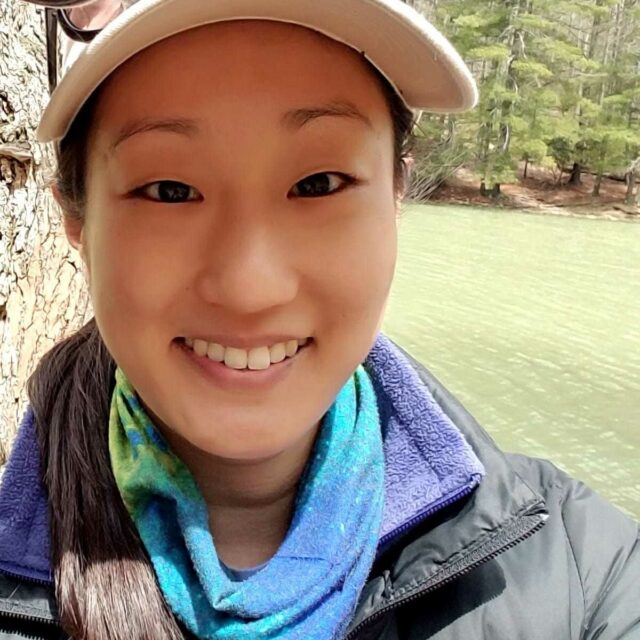
Sylvia Lee
Taxon Contributor Review Board
Content Editor, Keeled Diatoms Diatoms of North America, Editoral Review Board
Biologist U.S. Environmental Protection Agency
We move at the speed of trust. - María Gabriela Huertas Díaz, Estuario (San Juan Bay Estuary Program)
I first discovered diatoms as an undergraduate student at Loyola University Chicago (land of the Kaskaskia, Kickapoo, Miami, Očhéthi Šakówiŋ Sioux Nations, Peoria, Potawatomi) where I participated in a research project on the effects of dam operations on diatom communities of the Colorado River (land of the Hopi, Navajo, Pueblos, Southern Paiute, Ute).
Then, my graduate work at Florida International University took me to the Everglades (land of the Calusa, Miccosukee, Mayaimi, Seminole, Taino, Tequesta), where periphyton communities cover the landscape and provide habitat for fascinating diatoms, many of which are waiting to be described. My research focused on understanding how aquatic microorganisms come together to form complex communities, how the communities interact with their habitat in freshwater ecosystems, and how diatoms may respond to changes in hydrology associated with Everglades restoration efforts. At the Cary Institute in Millbrook (land of the Mohican, Munsee Lenape), New York, I conducted mesocosm experiments on the effects of multiple contaminants (nutrients, drugs, road salt) on algal and bacterial biofilm communities in urban streams of Baltimore (land of the Nentego, Piscataway, Susquehannock).
Currently, I work at the U.S. Environmental Protection Agency's Office of Research and Development in Washington, D.C (land of many Indigenous peoples past and present, including Nacochtank, Piscataway). My research provides scientific support related to biological assessments, nutrient criteria, and evidence-based decisions. I am also working to improve diatom taxonomic consistency and data quality in large monitoring programs and serving as Chair of the Diatom Taxonomic Certification Committee. I hold an adjunct professor position at the University of Iowa and co-instruct the Ecology and Systematics of Diatoms course at Iowa Lakeside Laboratory in Milford (land of the Očhéthi Šakówiŋ Sioux Nations, Yankton, Wahpeton), Iowa. I contribute to training and education about diatoms through the Diatom Web Academy.
I also serve as Co-chair of the Justice, Equity, Diversity, and Inclusion (JEDI) workgroup for the National Water Quality Monitoring Council. So far, I have no knowledge of a Korean-American diatom researcher other than myself. The lack of diversity in science means we are missing out on important ideas and neglecting or hurting communities who are most vulnerable to environmental impacts. We can do better science by co-creating knowledge and moving at the speed of trust.
Projects
Species contributed
Cylindrotheca gracilis | Envekadea metzeltinii | Envekadea pachycephala | Envekadea vanlandinghamii | Gomphonema freesei | Gomphonema gibba | Hantzschia amphioxys | Iconella hibernica | Mastogloia binotata | Mastogloia calcarea | Mastogloia pseudosmithii | Pleurosigma delicatulum | Staurophora columbiana | Ulnaria capitata | Urosolenia eriensis
Species reviewed
Campylodiscus clypeus | Cyclostephanos tholiformis | Encyonema paucistriatum | Hydrosera whampoensis | Iconella bifrons | Iconella guatimalensis | Mastogloia floridensis | Oxyneis binalis | Oxyneis binalis var. elliptica | Pinnularia turfosiphila
 Diatoms of North America
Diatoms of North America